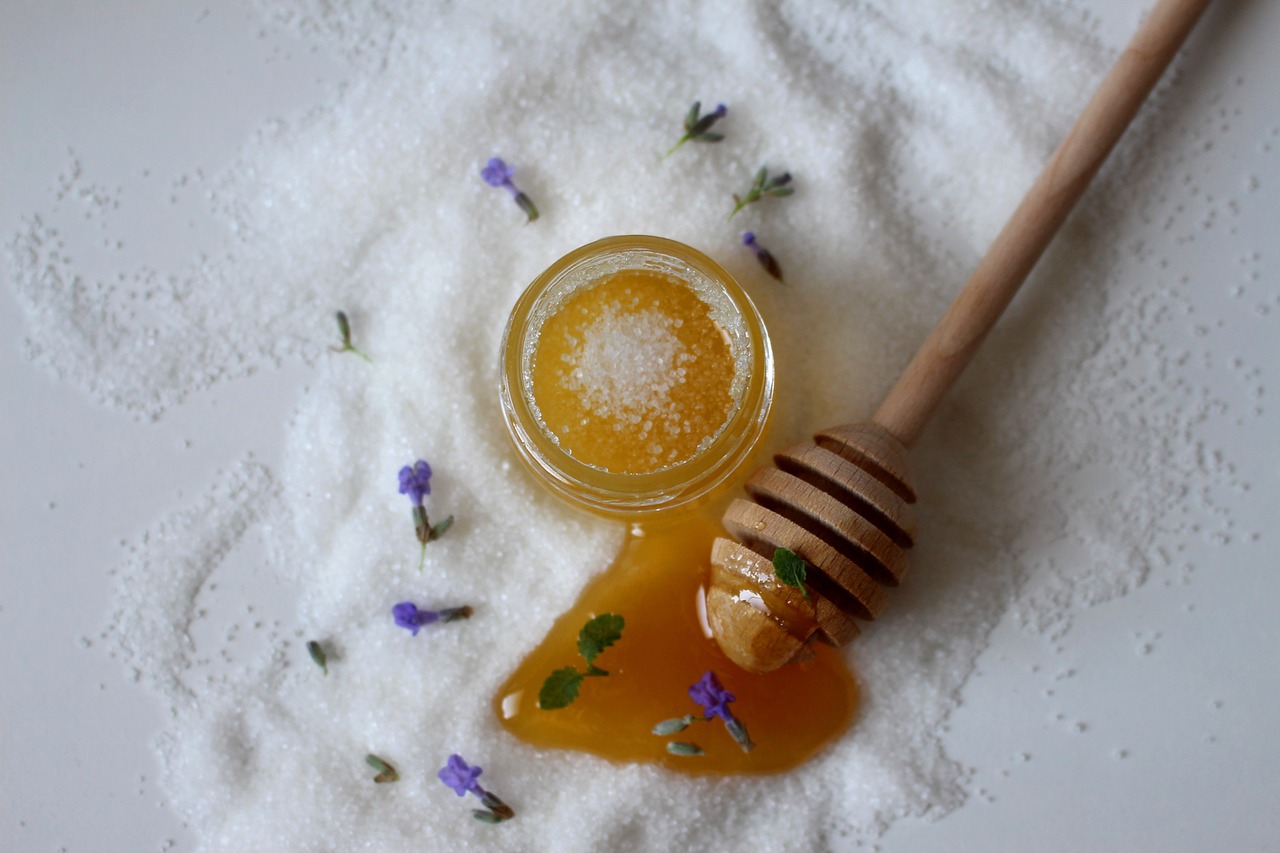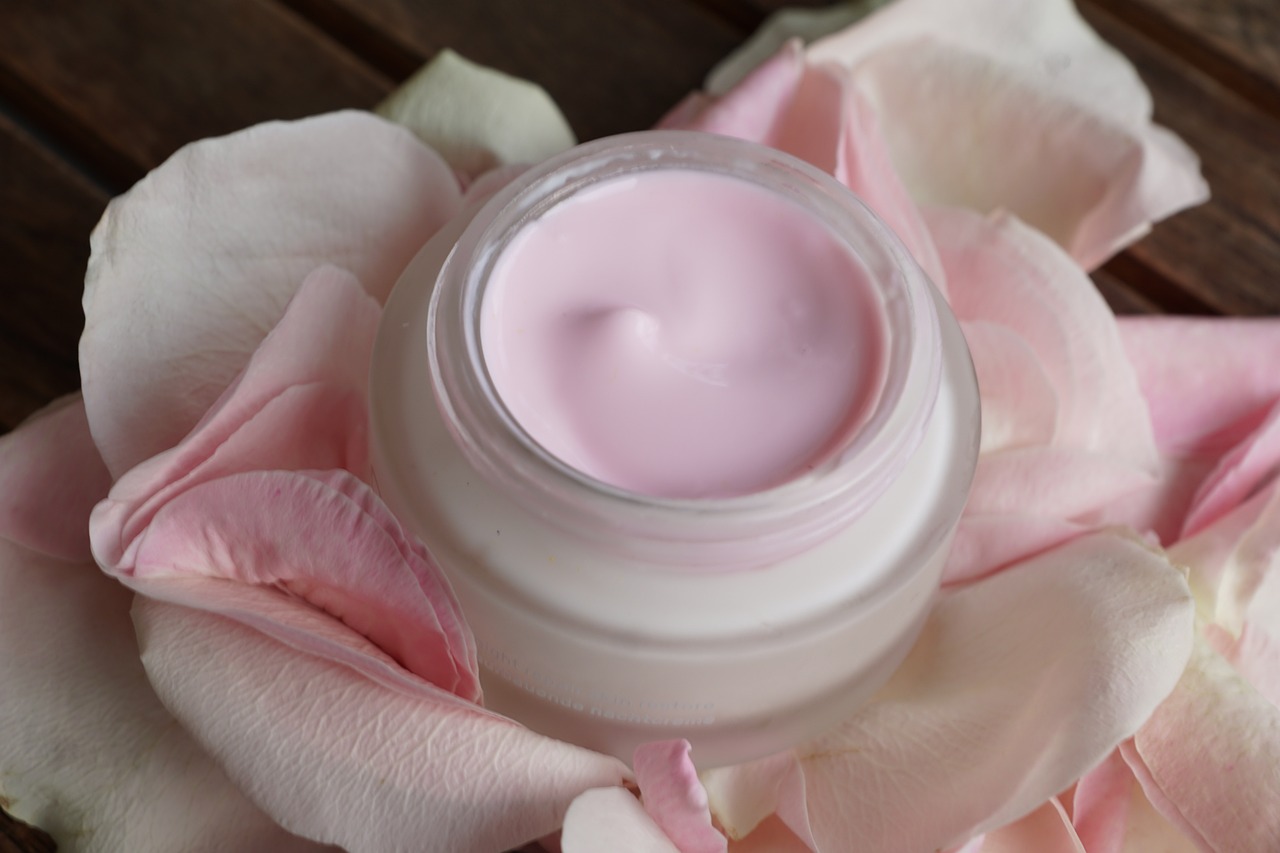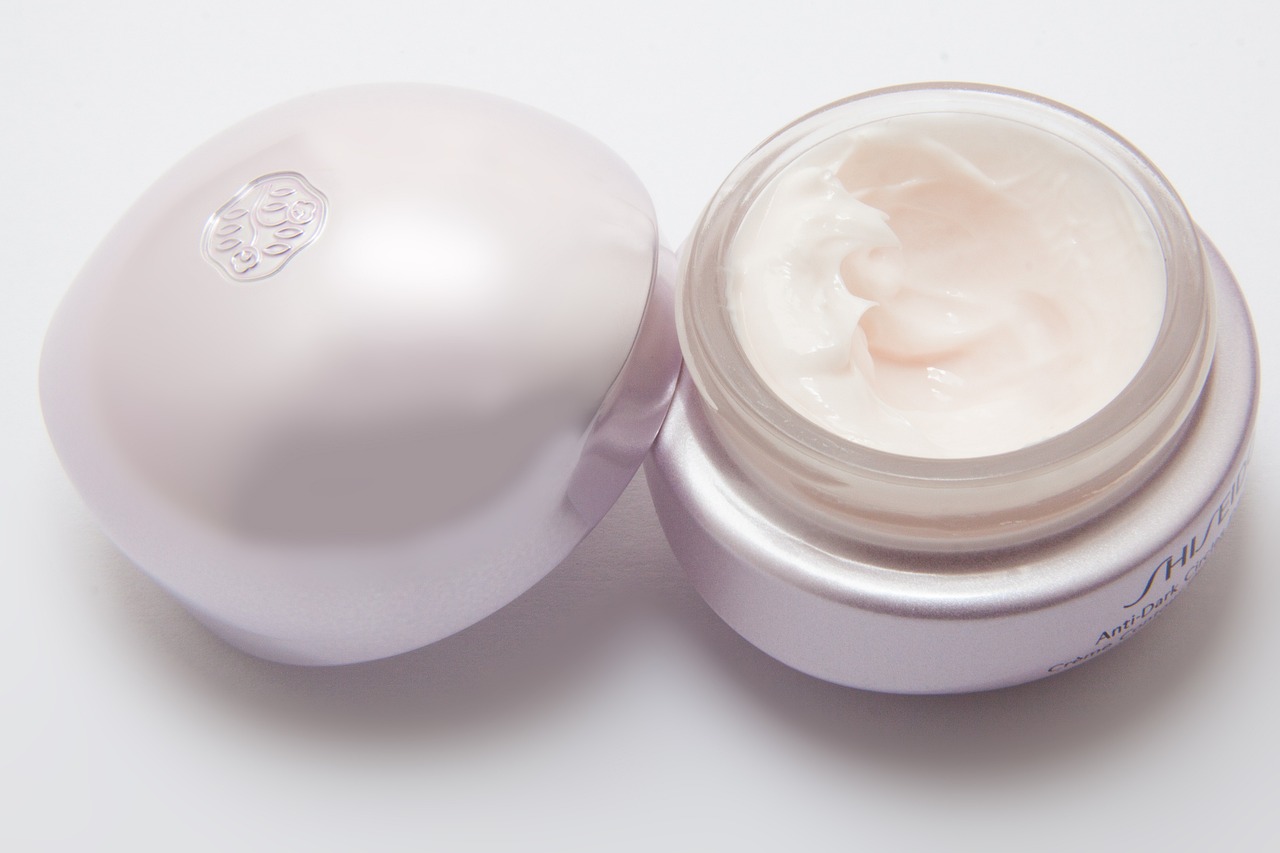How to Care for and Maintain Your Quilts: Essential Tips
Quilts are more than just decorative pieces; they carry stories, memories, and a touch of warmth that can transform any space. Whether it’s a family heirloom passed down through generations or a cozy creation from your latest crafting adventure, understanding how to care for and maintain your quilts is essential. After all, you wouldn’t want your beloved quilt to fade into oblivion, would you? In this article, we’ll delve into the nitty-gritty of quilt care, covering everything from cleaning methods to storage solutions. By the end, you’ll be equipped with the knowledge to keep your quilts looking fresh and vibrant for years to come!
Before diving into the cleaning and maintenance tips, it’s crucial to understand the various fabrics that make up your quilts. Different materials require unique care methods, and knowing the composition of your quilt can help you choose the right techniques to preserve its integrity. For instance, cotton quilts may withstand machine washing, while delicate silk quilts might need a gentler touch. Here’s a quick overview of common quilt fabrics:
| Fabric Type | Care Method |
|---|---|
| Cotton | Machine wash on gentle cycle |
| Silk | Hand wash or dry clean |
| Wool | Dry clean recommended |
| Polyester | Machine wash on gentle cycle |
Understanding these nuances will help you make informed decisions, ensuring your quilts stay in tip-top shape!
Regular cleaning is vital for quilt maintenance. Just like your favorite pair of jeans, quilts can accumulate dust, dirt, and allergens over time. So, how do you keep them fresh and vibrant? Let’s explore effective methods for washing, spot cleaning, and drying your quilts without causing damage.
When it comes to washing your quilts, the method you choose can significantly impact their longevity. Here are the most common washing methods:
- Machine Washing: Ideal for durable fabrics like cotton. Just remember to use a gentle cycle!
- Hand Washing: Perfect for delicate fabrics, ensuring a gentle clean.
- Dry Cleaning: Best for high-maintenance fabrics like silk and wool.
If you opt for machine washing, here are some best practices to follow:
- Use cold water to prevent shrinking and fading.
- Choose a mild detergent that’s free of harsh chemicals.
- Set your machine to a gentle cycle to protect delicate stitching.
Hand washing can be gentler on quilts, allowing you to control the process better. Here’s a simple step-by-step guide:
1. Fill a bathtub or large basin with lukewarm water. 2. Add a mild detergent and mix gently. 3. Submerge the quilt and gently agitate the water. 4. Let it soak for about 15-20 minutes. 5. Rinse thoroughly with cool water until the detergent is gone. 6. Gently press out excess water without wringing.
Proper drying and ironing techniques are crucial for quilt care. To maintain your quilt's shape and texture, follow these guidelines:
- Air Drying: Lay your quilt flat on a clean, dry surface to prevent stretching.
- Ironing: Use a low heat setting, and place a thin cloth between the iron and the quilt to avoid direct heat.
Correct storage is essential to prevent damage from dust, moisture, and pests. When not in use, consider these effective storage solutions:
The location where you store your quilts can significantly impact their longevity. Look for environments that are:
- Cool and dry to prevent mold and mildew.
- Dark to protect against fading from sunlight.
- Free from pests like moths and rodents.
Different storage options can affect quilt care. Here are some pros and cons:
| Storage Option | Pros | Cons |
|---|---|---|
| Bins | Stackable, protects from dust | Can trap moisture if not ventilated |
| Bags | Lightweight and portable | May not provide enough protection |
| Shelves | Easy access, display options | Exposed to dust and light |
Even the most cherished quilts can suffer damage over time. But don’t fret! Repairs can restore your quilts to their former glory. Common issues include small tears, loose seams, and fading colors. Let’s explore effective repair techniques.
Patching is a practical solution for small tears and holes. Here are some techniques to ensure repairs are both effective and visually appealing:
- Fabric Patches: Use matching fabric to create a seamless look.
- Iron-On Patches: Quick and easy, perfect for non-fraying fabrics.
Identifying and reinforcing weak areas in quilts can prevent further damage. Consider these strategies:
- Reinforce seams: Use fabric glue or stitching to secure loose seams.
- Backing Fabric: Adding a backing can provide extra support for fragile areas.
Q: How often should I wash my quilts?
A: It depends on usage, but generally, washing every 6-12 months is advisable.
Q: Can I use bleach on my quilts?
A: Avoid bleach as it can damage fabrics and colors. Opt for a gentle detergent instead.
Q: What’s the best way to store my quilts long-term?
A: Store in a cool, dry place, preferably in breathable cotton bags or acid-free boxes.

Understanding Quilt Fabrics
When it comes to caring for your quilts, understanding the different types of fabrics used is absolutely essential. Just like how a chef needs to know their ingredients to whip up a delicious dish, you need to familiarize yourself with the materials that make up your quilts. Each fabric comes with its own set of characteristics and requirements, which can significantly impact how you clean and maintain your treasured pieces. For instance, cotton quilts are popular for their durability and ease of care, while silk quilts, though luxurious, require a more delicate touch.
Quilt fabrics can generally be categorized into several types, each with unique properties:
- Cotton: This is the most common fabric used in quilting. It's breathable, easy to wash, and holds color well, making it a favorite among quilters and quilt owners alike.
- Polyester: Known for its durability and resistance to wrinkles, polyester quilts are often easier to care for but may not have the same breathability as cotton.
- Wool: Wool quilts offer warmth and insulation but can be tricky to clean. They often require special care to avoid shrinking or felting.
- Silk: Luxurious and beautiful, silk quilts are delicate and require gentle handling. They can be prone to fading and damage from moisture.
Knowing the fabric type helps you choose the right cleaning methods and storage solutions. For example, cotton quilts can typically withstand machine washing, while silk quilts may require hand washing or dry cleaning to prevent damage. Additionally, understanding the fabric will help you identify any specific care instructions that might come with your quilt, especially if it’s a handmade or vintage piece.
Moreover, the batting material used inside the quilt also plays a crucial role in its overall care. Common batting materials include cotton, polyester, and wool, each offering different levels of warmth and weight. For instance, cotton batting is breathable and great for warmer climates, while polyester batting is often more resilient and can withstand multiple washes.
In summary, taking the time to understand the various quilt fabrics not only enhances your appreciation for these beautiful creations but also equips you with the knowledge to keep them looking their best. Whether you're washing, storing, or repairing your quilts, knowing the right approach based on fabric type will ensure their longevity and beauty. So, the next time you admire your quilt, remember that its fabric is not just a layer of beauty—it's a key to its care!

Cleaning Your Quilts
Cleaning your quilts is not just about keeping them looking fresh; it's an essential part of maintaining their beauty and longevity. Over time, quilts can accumulate dust, dirt, and even allergens, which can detract from their charm and your enjoyment of them. So, how do you ensure that your beloved quilts stay vibrant and cozy? Let's dive into the various methods of cleaning that will help preserve these treasured pieces.
Regular cleaning is vital, but the method you choose depends largely on the material and construction of your quilt. For instance, some quilts are made from delicate fabrics that require a gentle touch, while others may be more robust and can withstand a bit of rough handling. Understanding the fabric composition is key. You might find that a quilt made from cotton can handle machine washing, while a silk quilt may need a more tender approach, such as hand washing or dry cleaning.
When it comes to washing methods, there are three primary options to consider: machine washing, hand washing, and dry cleaning. Each has its own set of advantages and disadvantages. For example, machine washing is quick and efficient but requires careful settings to avoid damage. On the other hand, hand washing is gentler and allows for more control, but it can be time-consuming. Dry cleaning is convenient for those who prefer to leave it to the professionals, but it can be more expensive and may not be necessary for all quilts. Here's a quick comparison of these methods:
| Washing Method | Pros | Cons |
|---|---|---|
| Machine Washing | Quick, efficient, and effective for sturdy fabrics | Risk of damage if settings are incorrect |
| Hand Washing | Gentle, allows for careful cleaning | Time-consuming and physically demanding |
| Dry Cleaning | Professional care, convenient for delicate fabrics | Can be costly and may not be necessary for all quilts |
Now, let's get into the nitty-gritty of machine washing tips. If you decide to use your washing machine, make sure to follow these best practices:
- Use cold water to prevent shrinking and fading.
- Choose a gentle detergent that is free from harsh chemicals.
- Select a delicate cycle to minimize agitation.
- Always place your quilt in a mesh laundry bag to protect it during the wash.
If you're leaning towards hand washing, here's a simple step-by-step guide to ensure your quilt gets the care it deserves:
- Fill a bathtub or large basin with lukewarm water and add a gentle detergent.
- Submerge the quilt gently, allowing it to soak for about 15-20 minutes.
- Gently agitate the water with your hands to help lift dirt.
- Rinse thoroughly with cool water until the detergent is completely washed out.
- Press out excess water without wringing or twisting the quilt.
After washing, the next step is drying. Proper drying techniques are crucial to prevent mold and mildew. Air drying is the safest option—simply lay your quilt flat on a clean, dry surface or hang it over a clothesline. Avoid direct sunlight to prevent fading. If you must use a dryer, opt for a low heat setting and add a few clean tennis balls to help fluff the quilt as it dries.
Ironing can also be part of your quilt care routine, but be cautious! Use a low heat setting and place a thin cloth between the iron and quilt to protect the fabric. Remember, the goal is to maintain your quilt's shape and texture without causing harm.
In conclusion, cleaning your quilts is a blend of art and science. Understanding the materials, choosing the right washing method, and drying correctly will keep your quilts looking beautiful for years to come. So, are you ready to give your quilts the love they deserve?
Q: How often should I clean my quilts?
A: It depends on usage, but a good rule of thumb is to clean them every 6-12 months, or more frequently if they are used regularly.
Q: Can I machine wash all types of quilts?
A: Not all quilts are suitable for machine washing. Always check the care label and consider the fabric type before washing.
Q: What should I do if my quilt gets stained?
A: For stains, spot cleaning with a gentle detergent and water is often effective. If the stain persists, consider professional cleaning.

Washing Methods
When it comes to washing your quilts, understanding the right methods is crucial to maintaining their beauty and longevity. Not all quilts are created equal, and the fabric composition can significantly influence how you should clean them. Whether you have a delicate silk quilt or a sturdy cotton one, knowing the appropriate washing methods can save you from potential disasters. Let's explore the various washing methods suitable for different quilt types, including machine washing, hand washing, and dry cleaning.
First off, machine washing is often the go-to method for many quilt owners due to its convenience. However, it's essential to consider the quilt's fabric. For instance, quilts made from cotton or polyester blends can generally withstand machine washing. But, be sure to use a gentle cycle and cold water to avoid shrinking or fading. Always check the care label before tossing your quilt into the wash. You might also want to use a mild detergent that is free of harsh chemicals, as this can help preserve the fabric's color and texture.
On the other hand, hand washing is a fantastic option for more delicate quilts. This method allows for greater control and is often gentler on the fabric. To hand wash your quilt, fill a bathtub or a large basin with cool water and add a small amount of gentle detergent. Submerge the quilt and gently agitate the water with your hands, allowing the detergent to penetrate the fabric. Avoid scrubbing or twisting the quilt, as this can cause damage. After a thorough soak of about 15-30 minutes, rinse the quilt with cool water until all detergent is removed.
If your quilt has significant stains or requires extra care, dry cleaning might be the best route. While it can be more expensive than washing at home, it ensures that your quilt is treated with professional care. Dry cleaning is particularly beneficial for quilts made from fabrics that are prone to shrinking or color bleeding. Always inform your dry cleaner about any specific concerns regarding your quilt, so they can tailor their approach accordingly.
In summary, the washing method you choose can greatly affect the lifespan and appearance of your quilt. Here’s a quick overview:
| Washing Method | Best For | Considerations |
|---|---|---|
| Machine Washing | Cotton, polyester blends | Use gentle cycle, cold water, mild detergent |
| Hand Washing | Delicate fabrics, vintage quilts | Gentle agitation, cool water, avoid twisting |
| Dry Cleaning | High-end fabrics, quilts prone to damage | Professional care, inform about specific needs |
By choosing the right washing method, you can keep your quilts looking fresh and vibrant for years to come. Remember, the key to maintaining your quilt's integrity lies in understanding its unique fabric needs and treating it with the care it deserves.
Q: How often should I wash my quilt?
A: It depends on usage. If it's used frequently, consider washing it every 6 months to a year. For decorative quilts, a light spot cleaning may suffice.
Q: Can I use bleach on my quilt?
A: It's best to avoid bleach, as it can damage the fabric and colors. Opt for a color-safe detergent instead.
Q: What should I do if my quilt has a stain?
A: Treat stains promptly with a gentle stain remover. Always test on a small area first to ensure it doesn’t damage the fabric.

Machine Washing Tips
When it comes to machine washing your quilts, it's essential to strike a balance between cleanliness and care. After all, these beautiful creations are often made from delicate fabrics that can easily be damaged if not treated properly. So, how do you ensure your quilts come out of the wash looking as good as new? Here are some key tips to keep in mind.
First off, always check the care label on your quilt. This label provides crucial information regarding the fabric type and recommended washing methods. For instance, quilts made from cotton can usually withstand a machine wash, while those with silk or wool components may require a more gentle approach.
Next, consider the water temperature. A good rule of thumb is to use cold water for most quilts, especially if they contain bright colors. Hot water can cause colors to bleed and fabrics to shrink, leading to a quilt that looks less than its best. Cold water not only helps in preserving the colors but also is more energy-efficient!
Now, let’s talk about detergent. Opt for a gentle, color-safe detergent that won’t harm the fabric. Avoid using bleach or harsh chemicals, as these can weaken the fibers and fade the colors. If your quilt has any stains, treat them separately with a stain remover before washing. Just be sure to test it on a small, inconspicuous area first to avoid any unpleasant surprises!
When loading your quilt into the washing machine, make sure to balance the load. If your quilt is bulky, consider washing it alone or with a few towels to prevent it from getting tangled or damaged. Additionally, using a mesh laundry bag can provide an extra layer of protection, keeping your quilt safe from the agitation of the wash cycle.
As for the washing cycle, choose a gentle or delicate cycle. This setting helps to minimize the agitation and ensures that your quilt is treated with the care it deserves. If your machine has a setting for quilts or bulky items, use that. It’s designed specifically to handle the weight and thickness of your beloved blankets.
Lastly, once the wash is complete, avoid the temptation to toss your quilt into the dryer. Instead, air drying is the preferred method for most quilts. Hang it over a clothesline or lay it flat on a clean surface, away from direct sunlight to prevent fading. If you must use a dryer, opt for a low heat setting and remove the quilt while it’s still slightly damp to prevent over-drying, which can lead to shrinkage.
By following these tips, you can ensure that your quilts remain vibrant and beautiful for years to come. Remember, each quilt tells a story, and with the right care, you can preserve those stories for future generations.
- Can I machine wash all types of quilts? It depends on the fabric. Always check the care label for specific instructions.
- What if my quilt has delicate embellishments? If your quilt has embellishments, consider hand washing or using a mesh laundry bag.
- How often should I wash my quilts? It’s best to wash your quilts every few months, depending on usage. Spot cleaning is also a good option for minor stains.
- Is it safe to use fabric softener? While some quilters use fabric softener, it can sometimes leave residues that affect the quilt's breathability. Use it sparingly.
- What should I do if my quilt shrinks after washing? If your quilt has shrunk, try gently stretching it back into shape while it’s damp. Avoid pulling too hard to prevent damage.

Hand Washing Techniques
Hand washing your quilts is a gentle yet effective way to keep them clean without risking damage that can occur with machine washing. This method is particularly beneficial for delicate fabrics or quilts with intricate stitching. To start, gather your materials: a large basin or bathtub, mild detergent, and plenty of water. It’s like preparing for a spa day for your quilt; you want everything just right!
Begin by filling your basin or bathtub with lukewarm water. Avoid hot water, as it can shrink fabrics or cause colors to bleed. Add a small amount of gentle detergent—preferably one that is free of harsh chemicals and dyes. Swirl the water gently to mix the detergent, creating a soothing bath for your quilt.
Once the water is ready, gently submerge your quilt, allowing it to soak. Be cautious not to twist or wring the fabric, as this can distort its shape. Instead, use your hands to gently agitate the quilt, ensuring that the detergent penetrates the fibers. Think of this as a gentle massage, treating your quilt with the utmost care.
After about 10-15 minutes of soaking, it’s time to rinse. Drain the soapy water and refill the basin with clean, lukewarm water. Carefully lift the quilt and allow the water to run through the fabric, gently pressing to remove soap without wringing. You may need to repeat this rinsing process several times until the water runs clear, indicating that all detergent has been removed.
Once rinsed, lay the quilt flat on a clean, dry towel. Roll the towel up gently to absorb excess water—this is crucial to prevent heavy wet fabric from stretching. After that, unroll the towel and lay the quilt flat to air dry. Avoid hanging it up, as this can cause the quilt to lose its shape. If your quilt has any stubborn stains, consider using a soft cloth to dab the area with a mixture of water and a tiny bit of detergent before rinsing.
Hand washing may take a bit longer than machine washing, but the care you provide ensures your quilt remains vibrant and intact for years to come. Remember, treating your quilt with love and respect during this process is key to maintaining its beauty!
- How often should I wash my quilt? It depends on usage, but a good rule of thumb is to wash it every 6 to 12 months, or more frequently if it gets heavy use.
- Can I use bleach on my quilt? No, bleach can damage fabrics and colors. Stick to gentle detergents for cleaning.
- What should I do if my quilt has a stain? Treat stains immediately with a gentle detergent and water, dabbing instead of rubbing.
- How can I prevent my quilt from fading? Store your quilt in a cool, dark place and avoid direct sunlight exposure.

Drying and Ironing
When it comes to caring for your quilts, proper drying and ironing techniques are just as crucial as washing. After all, you wouldn’t want to ruin the beauty and integrity of your cherished quilt by mishandling it in these stages. So, let’s dive into some essential practices that ensure your quilt remains in top-notch condition.
First off, let’s talk about drying. The best method for drying your quilt is to air dry it. This approach not only helps to maintain its shape but also protects the delicate fabrics from potential damage that can occur in a dryer. To air dry your quilt, lay it flat on a clean, dry surface, preferably outside on a sunny day, but be cautious of direct sunlight, which can fade colors over time. If outdoor drying isn’t an option, you can also hang your quilt over a sturdy clothesline or drape it over a large, clean towel.
However, if you must use a dryer, remember to use the lowest heat setting available. High heat can shrink or warp the fabric, leading to undesirable results. Always check the care label on your quilt for specific instructions regarding drying methods. If you choose to go the dryer route, it’s advisable to include a few clean tennis balls or dryer balls in the dryer to help fluff the quilt as it dries.
Now, onto ironing. Ironing a quilt can be a bit tricky, especially if you're dealing with delicate fabrics or intricate designs. It's essential to use the right settings on your iron. Generally, a low to medium heat setting is best, and it's wise to use a pressing cloth between the iron and the quilt to prevent direct heat from damaging the fabric. This technique is particularly important for quilts made from cotton or other sensitive materials.
Another tip is to iron your quilt while it's slightly damp. This can help to smooth out wrinkles more effectively without the risk of scorching the fabric. Always start with the back side of the quilt first, and then gently press the front. If you encounter any stubborn wrinkles, a little steam can work wonders, but remember to keep the iron moving to avoid burns.
In summary, the drying and ironing stages are pivotal in maintaining the beauty and longevity of your quilts. By following these guidelines, you can ensure that your quilts remain as stunning as the day you received or created them. Remember, treating your quilts with care during these processes is key to preserving their charm and functionality for years to come.
- Can I machine dry my quilt? - It's best to air dry your quilt to prevent damage, but if necessary, use the lowest heat setting on the dryer.
- What should I use to iron my quilt? - A low to medium heat setting is recommended, along with a pressing cloth to protect the fabric.
- How often should I wash my quilt? - It depends on usage, but generally, washing every few months is sufficient unless there are spills or stains.
- Is it safe to use fabric softener on quilts? - It's best to avoid fabric softeners, as they can leave a residue and affect the quilt's breathability.

Storing Your Quilts
Correct storage is essential to prevent damage from dust, moisture, and pests. When it comes to storing your quilts, it's not just about tossing them into a box and forgetting about them. You want to ensure that these beautiful pieces of art remain in excellent condition, ready to be displayed or used whenever the mood strikes. Think of your quilts as cherished treasures that deserve the best care possible, just like a fine wine that needs the right environment to age gracefully.
One of the first things to consider when storing your quilts is the environment. Ideally, you want to choose a location that is cool, dry, and away from direct sunlight. Exposure to sunlight can fade the colors and weaken the fabric over time, while humidity can lead to mold and mildew. A climate-controlled area is best, so if you have a spare room or closet, that might be the perfect spot.
When it comes to the actual storage method, there are a variety of options to consider. Each has its pros and cons, so let’s break it down:
| Storage Option | Pros | Cons |
|---|---|---|
| Plastic Bins | Durable, stackable, and protects from dust | Can trap moisture if not breathable |
| Cotton Storage Bags | Breathable, prevents dust buildup | Less protection from pests |
| Wooden Shelves | Great for display, easy access | Dust accumulation, potential for warping |
Each of these options has its place, but the most important factor is ensuring that your quilts are stored in a way that protects them from potential damage. For instance, if you choose plastic bins, be sure to add a few silica gel packets to absorb any moisture. If you're using cotton bags, make sure they're clean and dry before placing your quilts inside.
Another vital aspect of quilt storage is how you fold or roll them. Avoid sharp creases that can lead to permanent damage. Instead, consider rolling your quilts gently or folding them in a way that distributes the weight evenly. You might also want to use acid-free tissue paper between layers to help maintain their shape and prevent fabric from rubbing against fabric, which can cause wear.
Finally, remember that quilts are meant to be enjoyed! If you have the space, consider displaying them on a quilt rack or hanging them on a wall. This not only keeps them safe but also allows you to appreciate their beauty every day. After all, what good is a quilt if it’s hidden away, right?
Q: How often should I check on my stored quilts?
A: It's a good idea to check on your stored quilts at least once every few months to ensure they are in good condition and to address any potential issues before they become serious.
Q: Can I store my quilts in the attic or basement?
A: Attics and basements can be prone to extreme temperatures and humidity fluctuations, which can damage your quilts. If you must store them in these areas, ensure they are in airtight containers with moisture absorbers.
Q: Should I wash my quilts before storing them?
A: Yes, it's best to wash your quilts according to their care instructions before storing them. This removes any dirt or oils that could attract pests or cause stains over time.

Choosing the Right Storage Location
When it comes to preserving your cherished quilts, the storage location you choose plays a pivotal role. Imagine your quilt as a delicate flower; if you place it in a spot that gets too much sunlight or moisture, it could wilt and fade over time. So, what should you look for when selecting the perfect storage spot? First and foremost, aim for a location that is cool, dry, and dark. Excessive heat and humidity can lead to mold and mildew, while direct sunlight can cause colors to fade. Think of it as creating a cozy little home for your quilts, where they can rest and rejuvenate without the harshness of the outside world.
Another critical factor is air circulation. Storing quilts in a cramped, closed-off space can trap moisture and lead to unpleasant odors. Instead, opt for a location that allows for some airflow. A closet with a few gaps or a shelf in a well-ventilated room can be ideal. If you're using a storage box, make sure it has ventilation holes to keep air moving freely. You wouldn't want your quilts to feel suffocated, would you?
Additionally, consider the proximity to pests. Quilts can be a magnet for unwanted critters like moths and rodents, which can cause irreparable damage. Avoid storing your quilts in basements or attics where pests might thrive. Instead, think about using a storage area that is clean and pest-free. If you must use a less-than-ideal location, consider using moth repellents or natural deterrents like lavender sachets to keep those pesky intruders at bay.
Lastly, think about accessibility. You want to be able to reach your quilts easily when the mood strikes you to snuggle up or display them. A storage location that is too difficult to access may lead to neglect, and we certainly don’t want that! Consider using open shelving units or decorative bins that allow you to see your quilts at a glance. This way, you can admire their beauty while ensuring they remain in excellent condition.
- What is the best temperature for storing quilts? Ideally, quilts should be stored in a temperature-controlled environment, around 60-70°F (15-21°C), to prevent damage.
- Can I store quilts in plastic bags? While plastic bags can protect against moisture, they should not be airtight. Use breathable fabric bags or boxes to allow airflow.
- How often should I check on my stored quilts? It's a good idea to check on your quilts every few months to ensure they remain in good condition and free from pests.

Storage Options
When it comes to storing your quilts, the choice of storage options can significantly impact their longevity and condition. Think of your quilts as treasured heirlooms; just like you wouldn’t toss a valuable painting into a damp basement, your quilts deserve careful consideration when it comes to storage. There are several methods you can use, each with its own set of advantages and disadvantages. Let's explore some of the most popular storage options available.
One of the most common methods is using plastic bins. These bins are excellent for protecting quilts from dust, moisture, and pests. They are stackable, making them a space-saving option for those with limited storage. However, it’s crucial to ensure that the bins are made from breathable materials. Sealing quilts in airtight plastic can trap moisture, leading to mold and mildew. Therefore, consider placing a few cotton fabric layers inside the bin to allow for air circulation while still providing a protective barrier.
Another option is fabric storage bags. These are often made from breathable materials such as cotton or muslin, which help to keep your quilts safe while allowing them to breathe. One downside is that fabric bags can sometimes be less protective against pests, so it’s wise to keep them in a pest-free environment. Furthermore, fabric bags are lightweight and easy to store, making them ideal for those who frequently rotate their quilts based on seasons or occasions.
If you have the space, open shelving can be a visually appealing way to store your quilts. This method allows you to display your beautiful quilts while keeping them easily accessible. However, be mindful of dust accumulation and sunlight exposure, which can fade the colors over time. To mitigate these risks, consider using a decorative quilt rack or a shelf that allows you to fold the quilts neatly, minimizing creasing while keeping them out of direct sunlight.
Lastly, some people prefer hanging quilts on walls as a form of art display. While this is a fabulous way to showcase your work, it’s essential to use non-damaging methods to hang them. Avoid using nails or pins that could create holes; instead, opt for quilt hangers or clips that hold the fabric without causing damage. This method not only preserves the quilt but also adds a unique touch to your home decor.
In summary, the best storage option for your quilts depends on your space, how often you use them, and personal preferences. Whether you choose bins, bags, shelves, or hanging methods, always prioritize protecting your quilts from moisture, pests, and sunlight. After all, a little bit of care goes a long way in preserving those beautiful, intricate designs that tell a story of their own.
- How often should I wash my quilts? It’s generally recommended to wash quilts every 6 to 12 months, depending on usage.
- Can I store my quilt in the attic? Attics can be prone to extreme temperatures and humidity, so it’s best to avoid storing quilts there.
- What should I do if my quilt gets damaged? Assess the damage and consider patching or reinforcing weak areas. If you're unsure, consult a professional.

Repairing Damaged Quilts
Quilts are more than just cozy blankets; they are often cherished heirlooms filled with memories and stories. However, even the most beloved quilts can suffer from wear and tear over time. Whether it's a small tear, a stain, or fraying edges, knowing how to repair damaged quilts is essential for preserving their beauty and functionality. Let's dive into some common issues you might encounter and effective techniques to restore your quilts to their former glory.
One of the most common problems quilt owners face is small tears or holes. These can happen for various reasons, from snagging on furniture to being caught in a zipper. Fortunately, patching is a practical solution for these minor damages. You can use a fabric that closely matches your quilt's original material or even opt for a contrasting fabric for a unique touch. When patching, be sure to cut the patch slightly larger than the hole, allowing enough fabric to secure it in place. You can sew it on by hand or use a sewing machine for a quicker fix.
Another area of concern is the edges of your quilt, which can become frayed over time. To reinforce these weak areas, consider adding a border or binding. This not only strengthens the edges but also enhances the quilt's overall appearance. Choose a fabric that complements your quilt's design, and sew it along the edges, folding it over to create a neat finish. This method not only protects your quilt but also gives it a polished look.
For stains, it's crucial to act quickly. The longer a stain sits, the harder it becomes to remove. You can use a gentle stain remover suitable for the quilt's fabric type. Always test a small, inconspicuous area first to ensure the fabric won't be damaged. For stubborn stains, a combination of cold water and mild detergent can work wonders. Apply the solution gently, using a soft cloth or sponge, and rinse thoroughly.
If your quilt has experienced significant damage, such as large tears or extensive fraying, you might consider enlisting the help of a professional quilt repair service. These experts can provide specialized care and restoration techniques that can breathe new life into your treasured piece. However, if you're a DIY enthusiast, don't shy away from attempting repairs yourself. With a little patience and creativity, you can turn your damaged quilt into a beautiful, functional piece once again.
In summary, repairing damaged quilts is not only about restoring their physical integrity but also about preserving the memories they hold. With some basic sewing skills and a bit of creativity, you can tackle common issues and keep your quilts looking their best for years to come. Remember, every stitch you make is a step towards maintaining the legacy of your cherished quilt.
- How can I prevent my quilts from getting damaged? Regularly inspect your quilts for signs of wear, keep them clean, and store them properly to prevent damage from dust and moisture.
- What materials do I need for quilt repairs? Basic sewing supplies such as needles, thread, fabric patches, and scissors are essential for most quilt repair tasks.
- Can I machine wash my quilt after repairing it? Yes, but ensure you follow the appropriate washing methods based on the fabric type to avoid further damage.
- How do I know if a professional repair is necessary? If the damage is extensive or you feel unsure about making the repairs yourself, it's best to consult a professional.

Patching Techniques
Patching your quilts is not just a practical solution for small tears and holes; it’s also an opportunity to add a touch of creativity and personal flair to your beloved pieces. Think of it as giving your quilt a little facelift! When you notice a small tear, don’t despair—embrace the chance to repair and rejuvenate. The right patching technique can not only fix the damage but also enhance the quilt's overall aesthetic.
Before diving into the patching process, it’s essential to gather your materials. You’ll need matching fabric for the patch, scissors, needle and thread, and possibly an iron for a crisp finish. Selecting the right fabric is crucial; ideally, it should be similar in weight and texture to the quilt’s original material. This ensures that the patch blends seamlessly with the rest of the quilt, maintaining its charm and character.
One effective patching technique involves the following steps:
- Assess the Damage: Examine the area that needs repair. If the tear is small, you may be able to simply stitch it closed. For larger holes, a patch will be necessary.
- Cut the Patch: Cut a piece of fabric that is at least an inch larger than the damaged area on all sides. This extra fabric will help secure the patch in place.
- Pin the Patch: Position the patch over the damaged area and pin it securely. This prevents the patch from shifting while you sew.
- Sew the Patch: Using a needle and thread that matches the quilt, sew around the edges of the patch. A simple straight stitch or a zigzag stitch can work wonders. For added durability, consider a whip stitch or a ladder stitch, which can also keep the patch from being too visible.
- Finish Up: Once you’ve sewn the patch in place, remove the pins and give the area a gentle press with an iron to flatten any puckering.
For those who enjoy a bit of whimsy, consider using a contrasting fabric for your patch. This can turn a simple repair into a decorative feature, showcasing your creativity. Remember, the goal is not just to fix the quilt but to celebrate its history and the stories it tells.
In addition to patching, it’s wise to check for weak areas in your quilts regularly. Identifying these spots early allows you to reinforce them before they become significant problems. Techniques like adding a backing fabric or using fusible interfacing can provide extra support and prolong the life of your quilt.
Q: Can I use any fabric for patching my quilt?
A: While you can use any fabric, it's best to choose one that matches the quilt's weight and texture for a seamless repair.
Q: What if I'm not skilled at sewing?
A: No worries! There are many online tutorials and sewing classes that can help you learn basic sewing techniques. You could also consider fabric glue as a temporary solution.
Q: How can I prevent further damage after patching?
A: Regularly inspect your quilts for wear and tear, and store them properly to minimize exposure to light, dust, and moisture.

Reinforcing Weak Areas
When it comes to caring for your quilts, is an essential step that can significantly prolong their lifespan. Just like how a sturdy foundation supports a house, ensuring that the vulnerable spots in your quilts are well taken care of can prevent further deterioration. Weak areas often manifest as worn-out seams, faded patches, or fabric that has begun to fray. By identifying and addressing these issues early on, you can save yourself the heartache of dealing with larger, more costly repairs down the line.
First, it's important to regularly inspect your quilts. Look for signs of wear and tear, particularly in areas that experience the most stress, such as corners and edges. If you notice any weak spots, don't panic! There are several effective strategies you can employ to reinforce these areas. For instance, sewing a simple patch can work wonders. You can use a fabric that matches your quilt or even a contrasting fabric for a unique look. This not only repairs the damage but can also add an artistic flair to your quilt.
Here are a few techniques to consider when reinforcing weak areas:
- Patching: Use a fabric patch that matches or complements your quilt. Cut a piece slightly larger than the damaged area and sew it securely in place.
- Reinforcing seams: If seams are coming apart, consider using a zigzag stitch to strengthen them. This technique prevents fraying and adds durability.
- Adding interfacing: For areas that are particularly weak, you can iron on interfacing on the back side of the fabric. This provides extra support without altering the quilt's appearance.
Additionally, it's wise to use a needle and thread that are appropriate for the fabric type to ensure a secure hold. For delicate fabrics, opt for a fine needle and thread, while heavier fabrics may require a sturdier option. Remember, the goal is not just to repair but also to reinforce these areas so they can withstand future use.
Moreover, if you find that certain areas of your quilt are consistently weak, consider re-evaluating your storage methods. Storing quilts improperly can lead to unnecessary stress on the fabric. Make sure to store them flat or rolled, rather than folded, to avoid creases and pressure points that can exacerbate wear.
In summary, taking the time to reinforce weak areas in your quilts is like giving them a little TLC. With some basic sewing skills and a keen eye for detail, you can keep your beloved quilts looking beautiful and lasting for generations to come. Remember, a well-maintained quilt is not just a blanket; it's a cherished piece of art and history.
Q: How often should I check my quilts for weak areas?
A: It's a good practice to inspect your quilts at least once a season. This way, you can catch any issues before they become significant problems.
Q: Can I reinforce weak areas without sewing?
A: Yes! Fabric glue or fusible interfacing can be used for quick fixes, but sewing is generally the most durable solution.
Q: What should I do if the damage is extensive?
A: If your quilt has significant damage, it might be worth consulting a professional quilt restorer who can provide expert repairs.
Frequently Asked Questions
- How often should I clean my quilts?
It's recommended to clean your quilts at least once a year, but if you use them frequently or have allergies, consider washing them every six months. Regular cleaning keeps them fresh and helps prevent dust and allergens from building up.
- Can I machine wash my quilt?
Yes, you can machine wash most quilts, but it's essential to check the care label first. Use a gentle cycle, cold water, and a mild detergent to avoid damaging the fabric. Remember to balance the load to prevent tangling!
- What’s the best way to store quilts?
The best way to store quilts is to keep them in a cool, dry place away from direct sunlight. Use breathable cotton bags or acid-free storage boxes to protect them from dust and moisture. Avoid plastic bags, as they can trap humidity and lead to mold.
- How do I repair a tear in my quilt?
For small tears, you can use patching techniques. Cut a piece of fabric that matches your quilt and sew it over the tear. For larger damages, consider reinforcing the edges before patching to prevent further ripping.
- Is hand washing better than machine washing?
Hand washing can be gentler on delicate quilts, reducing the risk of wear and tear. If your quilt is particularly fragile or has sentimental value, hand washing is a safer option. Just remember to be gentle and avoid wringing out the fabric!
- Can I use fabric softener on my quilts?
It's best to avoid fabric softeners as they can leave a residue that may damage the quilt's fibers over time. Instead, opt for a mild detergent and consider using white vinegar during the rinse cycle for added freshness!
- What should I do if my quilt smells musty?
If your quilt has a musty smell, it’s time for a good wash! Use a gentle detergent and add a cup of baking soda to the wash cycle to help eliminate odors. Make sure to dry it thoroughly to prevent any moisture-related issues.
- How can I prevent pests from damaging my quilts?
To prevent pests, always store your quilts in clean, dry conditions. You can also place cedar blocks or lavender sachets in your storage area, as they naturally repel moths and other insects.
- What’s the best way to iron my quilt?
When ironing your quilt, use the lowest heat setting and place a thin cloth between the iron and the quilt to protect the fabric. Always iron from the back to avoid any potential damage to the front design!



















